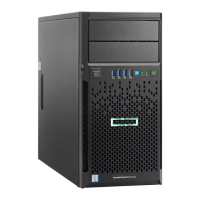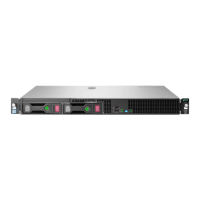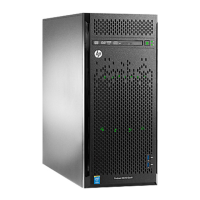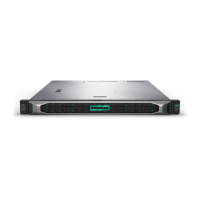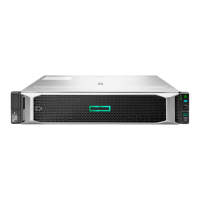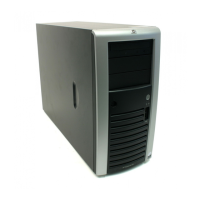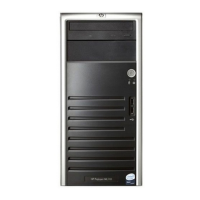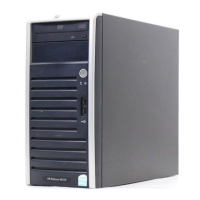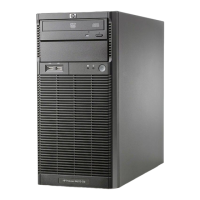Component identification 12
S5
Off = Power-on password is enabled.
On = Power-on password is disabled.
S6
On = ROM reads system
configuration as invalid.
S7
Off = Set default boot mode to UEFI.
On = Set default boot mode to legacy.
To access the redundant ROM, set S1, S5, and S6 to On.
When the system maintenance S6 switch is set to the On position, the system will erase all system
configuration settings from both CMOS and NVRAM on the next reboot.
CAUTION: Clearing CMOS and/or NVRAM deletes configuration information. Be sure to
properly configure the server or data loss could occur.
Before using the S7 switch to change the boot mode to Legacy BIOS Mode, you must first disable the
Dynamic Smart Array B140i Controller.
To disable the Dynamic Smart Array B140i Controller:
1. Reboot the server.
The server restarts and the POST screen appears.
2. Press F9.
The System Utilities screen appears.
3. Select System Configuration → BIOS/Platform Configuration (RBSU) → System Options →
SATA Controller Options → Embedded SATA Configuration, and then press Enter.
4. Select Enable SATA AHCI Support, and then press Enter.
5. Press F10 to save the selection.
6. Press Y to save the changes.
The Change saved confirmation prompt appears.
7. Select Exit and resume system boot, and press Enter.
The server continues the normal boot process.
NMI functionality
An NMI crash dump creates a crash dump log before resetting a system which is not responding.
Crash dump log analysis is an essential part of diagnosing reliability problems, such as failures of
operating systems, device drivers, and applications. Many crashes freeze a system, and the only
available action for administrators is to restart the system. Resetting the system erases any information
which could support problem analysis, but the NMI feature preserves that information by performing a
memory dump before a system reset.
To force the system to invoke the NMI handler and generate a crash dump log, do one of the following:
• Use the iLO Virtual NMI feature.
• Short the NMI header ("System board components" on page 10).
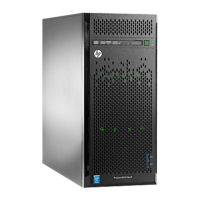
